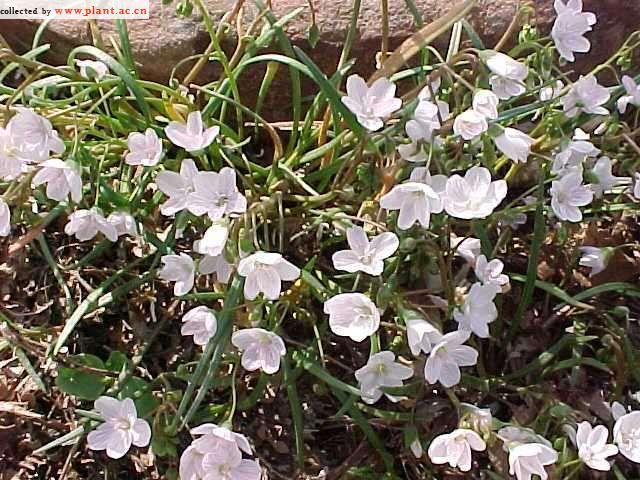Claytonia virginicaSpring beauty
科:马齿苋科
Family:Portulacaceae
common name:Spring beauty
introduce:Plant Type: Herbaceous perennial
Family: Portulacaceae
Missouri Native: Yes
Native Range: Eastern North America
Height: 0.5 to 0.75 feet
Spread: 0.5 to 0.75 feet
Bloom Time: April
Bloom Color: White to pink
Sun: Full sun to part shade
Water: Medium moisture
Maintenance: High
General Culture:
Best grown in average, medium wet, well-drained soils in full sun to part shade. Prefers organically rich, moist, fertile soils. Plant corms 3?deep and space 3?apart in fall. Naturalizes easily by bulb offsets and self-seeding, and can be somewhat invasive in optimum growing conditions.
Noteworthy Characteristics:
Spring beauty is a delicate, much-beloved, native Missouri spring wildflower that typically occurs statewide in rich, moist woodlands and valleys, meadows, prairies and somewhat dry upland woods (Steyermark). It is a low-growing spring ephemeral that features clusters of star-like, five-petaled, white to light pink flowers (to 緮 wide) with pink veins and pink anthers. Flowers bloom in April atop thin stems rising 4-6?tall at bloom time. Narrow, linear, grass-like, dark green leaves (usually in pairs). Foliage continues to grow after bloom and may eventually reach 9-12?tall before the leaves disappear in late spring as the plants go into dormancy. Small, potato-like, underground tubers (corms) are edible (chestnut-like flavor) and were in fact consumed by early Americans, but are time-consuming to collect in quantity sufficient for a meal.
Problems:
No serious insect or disease problems. Invasiveness and post-bloom dormancy can both be a blessing or a curse depending on where plants are sited.
Uses:
Mass in rock gardens, woodland gardens, meadows, naturalized areas or wildflower gardens. Also may be effectively naturalized in lawns in somewhat the same manner as spring crocus.
